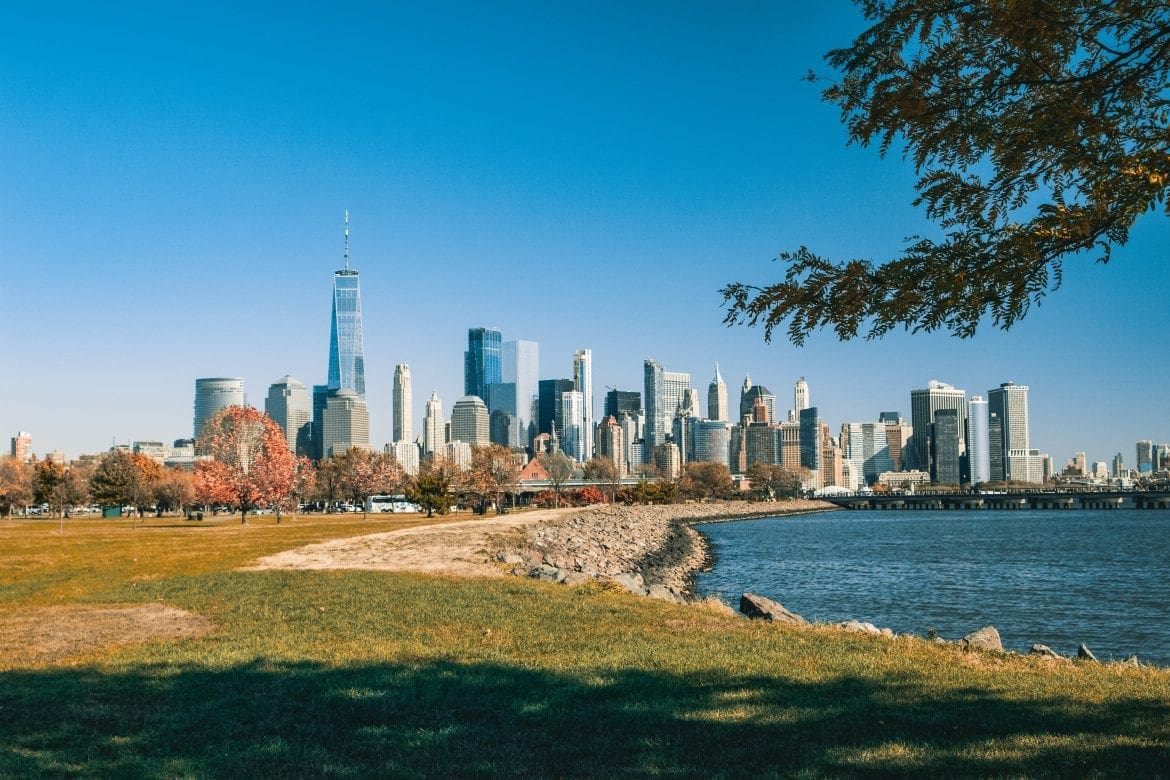One might not think that there is much to the history of Liberty State Park. In part, that may be because of how eye-catching its scenery is.
Like a green thumbprint, the Park stands out between the steel-driven cityscapes of Northern New Jersey. Aquatic wetlands, small ponds, salt marshes and forests surround the Park. All that openness allows one to look across the Upper New York Bay and see two figures of American narrative history—the Statue of Liberty and Ellis Island. Both have, for centuries, welcomed immigrants to their new home.
Such amazing views make Liberty State Park New Jersey’s most popular park, according to the New Jersey Conservation Foundation. Every year, it attracts upwards of five million people. Visitors have enjoyed the scenic walkways, picnic areas and the gorgeous waterfront for years, which have been steadily maintained through careful renovation and conservation efforts.
Given how lush that landscape is today, it’s hard to believe it was anything but a green oasis in the middle of metropolitan New Jersey. Yet this is true. The history of Liberty State Park is one of remarkable transformation and re-development, providing a rich narrative befitting such a rich landscape.
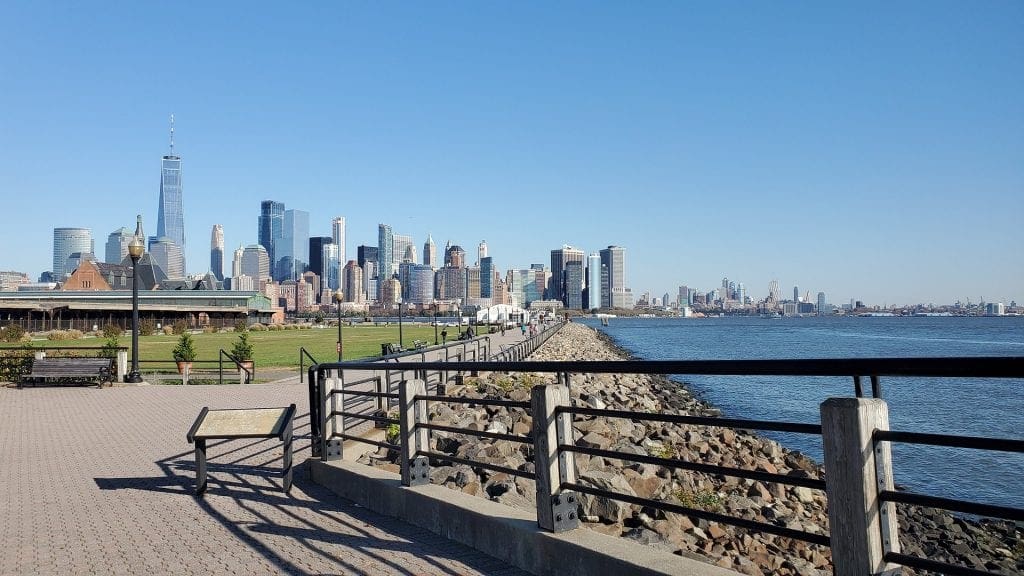
Waterfront | Photo courtesy of ireallylikefood
The History of Liberty State Park
Early Geographic Origins
According to the Hudson-Raritan Estuary Comprehensive Restoration Plan, Liberty State Park lies on top of landfilled tidal flats. These are usually found in bays, estuaries and lakes, where rich sediments have been deposited by river runoff or in-flow tides. These areas are also considered “intertidal areas” for that reason.
Tidal flats are often rich ecosystems for a variety of species, including birds, crustaceans and mollusks. Historically they have been used as encampments for humans, and the land on which Liberty State Park stands is no different. The Hackensack Native Americans used the area as a summer encampment and harvested from the vast oyster banks along the shorelines. They originally called the area “Communipaw,” which roughly translates to “big landing-place from the other side of the river.”
The 17th century saw the arrival of Europeans in the New World. Communipaw became part of the colonial province of New Netherland, one of the earliest European-established colonies. When the English took over in 1674, the colony became part of the Province of New Jersey in Bergen County. The vast oyster beds continued to be harvested well into the 19th century.
Industrialization of the Land
With the advent of the American Industrial Revolution occurring in the 19th century, Liberty State Park quickly became engrossed in the development of new technologies. Primarily, the land offered plenty of space for the transformation of the nation’s transportation industry.
The nation’s population was growing, as was its output of goods and supplies. As such, a new means of transportation was required to transport both people and items to other parts of the country. Luckily, this was also the time that railroads were beginning to connect east and west, and interested parties took advantage of the demand to construct their own railroad companies.
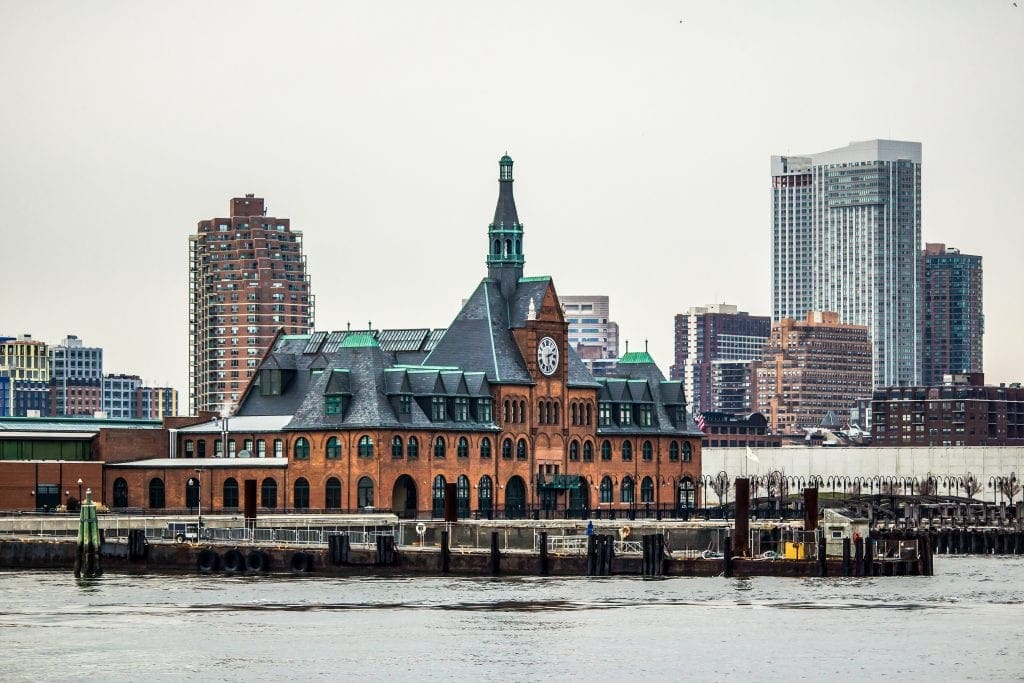
CRRNJ Terminal | Photo courtesy of Gautam Krishnan
In 1864, the Central Railroad of New Jersey (CRRNJ) Terminal bought large swaths of land in North Jersey. It would expand its reach to the areas beyond, including where Liberty State Park was later constructed. The company turned many of the marshlands in order to rail yards, and in the late 1880s, had constructed the largest concentration of rail yard facilities in the area.
Alongside the construction of rail yards, the land also saw ports constructed on its shores. The salt marshes were drained and replaced with these kinds of buildings, leading to a heavily urbanized environment.
The Immigration Narrative
The late 19th and early 20th centuries represented an enormous influx of immigrants coming from Europe. The Statue of Liberty, newly arrived, greeted immigrants with her flaming torch and promises of a new chance at life. Ellis Island, which opened in 1892, would process them for citizenship. Afterward, many immigrants would take ferries to the Jersey waterfront. There they would board the trains that the CRRNJ Terminal had prepared, which would transport them to their new homes.
These three features—the Statue, the Island, and the Terminal—all became linked to what would later be described as the “Historic Trilogy” of the immigration narrative. The Terminal became the lifeline of New York City and the Harbor Area, as well as the “heart” of the trilogy. This comparison was particularly apt. Much like how the heart sends blood to all parts of the body, the Terminal sent immigrants to all parts of the country.
From 1890 to 1915, 30,000 to 50,000 immigrants arrived at the Terminal. It took 300 trains to carry those impressive numbers to wherever they needed to go.
Eventual Decline
The late 19th and early 20th centuries represented a golden age for the historic trilogy. But that wasn’t to last. Within 20 years, the Terminal and the land on which it was based began to decline due to several important factors.
The first, primarily, was simply that the number of immigrants arriving at the terminal had dropped. According to the U.S. Census, between the 1930s and the 1950s, the foreign-born population of the U.S. dropped from 11.6 percent to 6.9 percent of the total population. These numbers reflected the effect that the Great Depression had on immigration. The outbreak of World War II in 1939 furthered the decline in numbers.
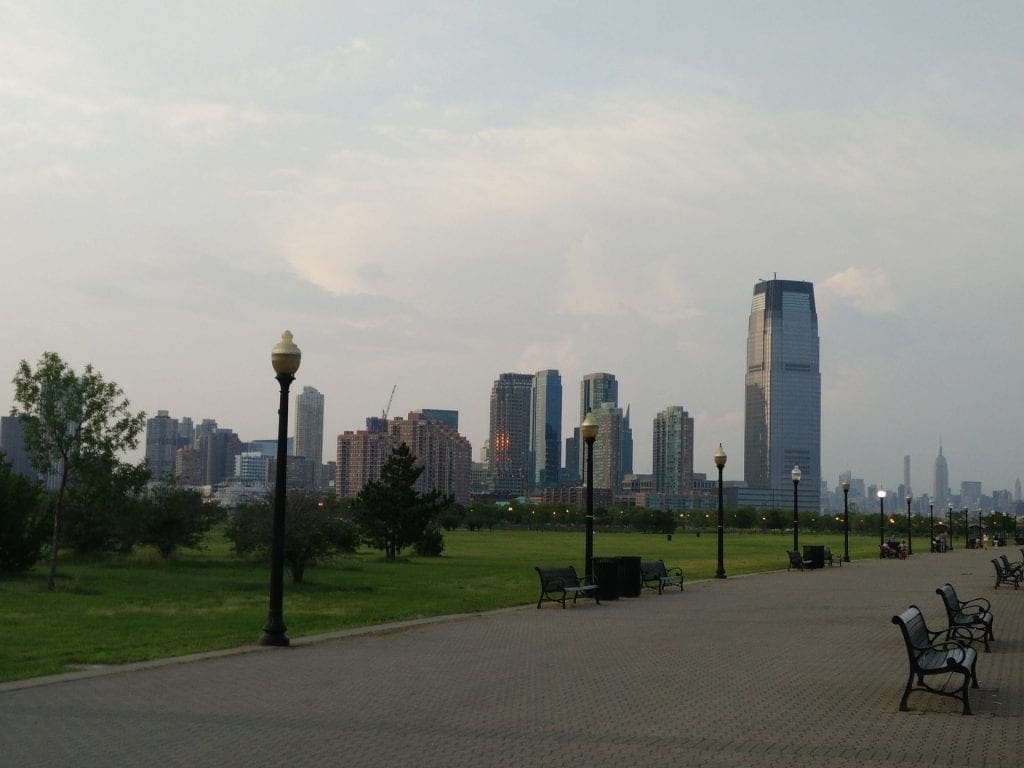
View of park | Photo courtesy of zoomer99
Competitors to the CRRNJ Terminal also began to appear. Between 1904 and 1908, the Pennsylvania Railroad Company constructed the North River Tunnels, which Amtrak and New Jersey Transit rail lines still use today. In 1956, the Eisenhower administration introduced the Federal Aid Highway Act, creating the Interstate Highway System. A stronger infrastructure made traveling by railroad less viable.
There were environmental factors, too. The industrialization of the former marshlands had led to a geological history of toxic waste build-up. Soil contamination due to waste runoff led to brownfields, which the Environmental Protection Agency describes as “a property, the expansion, redevelopment, or reuse of which may be complicated by the presence or potential presence of a hazardous substance, pollutant, or contaminant.”
All of these problems and developments continued to build. The CRRNJ Terminal couldn’t compensate. In 1967, it discontinued commuter service. The waterfront became a wasteland of decaying piers and abandoned railroad yards for almost two decades.
The Beginnings of a Rebirth
Morris Pesin’s Vision
Before the land’s decline, it had captured the attention and dreams of one man: Morris Pesin.
On a drizzly June 13, 1958, Morris traveled by canoe from the park’s shore to the Statue of Liberty. A reporter from the “Jersey Journal” accompanied him. On the trip, Morris shared his idea of an open space family park, built out of that wasteland which, no doubt, had begun to show its ugly face even a decade before the terminal’s closing. He was struck by that image’s direct opposite: the magnificent Statue of Liberty winking out of the mist. He found it hard to believe that something that significant could not only be within an eight-minute canoe trip from New Jersey, but that it hadn’t been turned into a focal point for tourism and recreation.
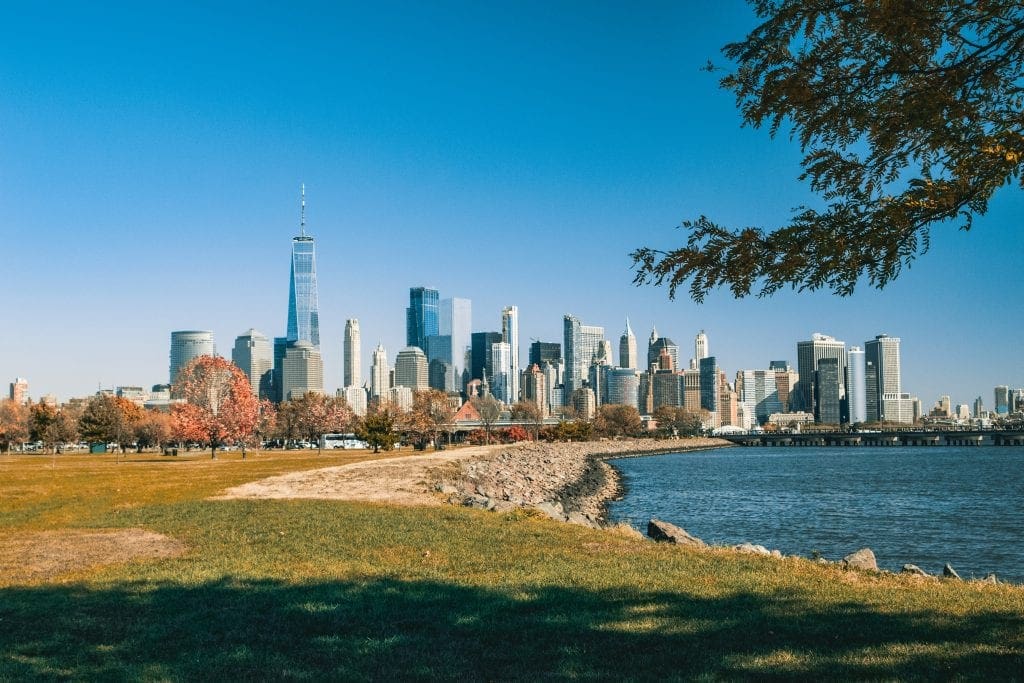
Liberty State Park NYC View | Photo courtesy of Joey Pedras
Later on, Morris approached the Jersey City Commission with that idea. “We have here at our doorstep America’s greatest shrine—the Statue of Liberty—and we have failed to realize its potential,” he said. The potential for a site dedicated to that image inspired him to pursue his vision, and he began to share his ideas with others.
Restoration and Transformation Movement
For 18 years, a movement for restoring and transforming the land churned in the public’s minds like the waters of the bay. In 1962, Pesin, alongside the architect Theodore Conrad, founded the Statue of Liberty Causeway and Park Association, Inc., to gather government and public support. Conrad also spent that year constructing a model of a tree-filled park, the blueprint for what would become Liberty State Park.
The Hudson County Citizens Committee also supported the movement. Prominent environmentalists and historians like Audrey Zapp and J. Owen Grundy generated much noise in favor of park construction. The first step towards its construction came in 1965, when Jersey City deeded 156 acres to the state for use.
Funds came slowly. State officials didn’t approve of enough funds to acquire the abandoned rail yard land. But two final contributors changed that. First was the 1971 Green Acres Bond Act. It granted $80 million for land acquisition and divided that amount evenly between state and local grants. Second was the strong interest of Richard Sullivan, who was the first commissioner of the recently formed New Jersey Department of Environmental Protection (NJDEP). All told, the movement acquired $3 million for purchasing the abandoned rail yards.
Major cleanup began for the next five years. Finally, after much work, Liberty State Park opened on June 14, 1976. Coincidentally, this was “Flag Day,” and the year made it America’s bicentennial. New Jersey’s governor at the time, Brendan Bryne, announced that it would be “New Jersey’s gift to the Nation.”
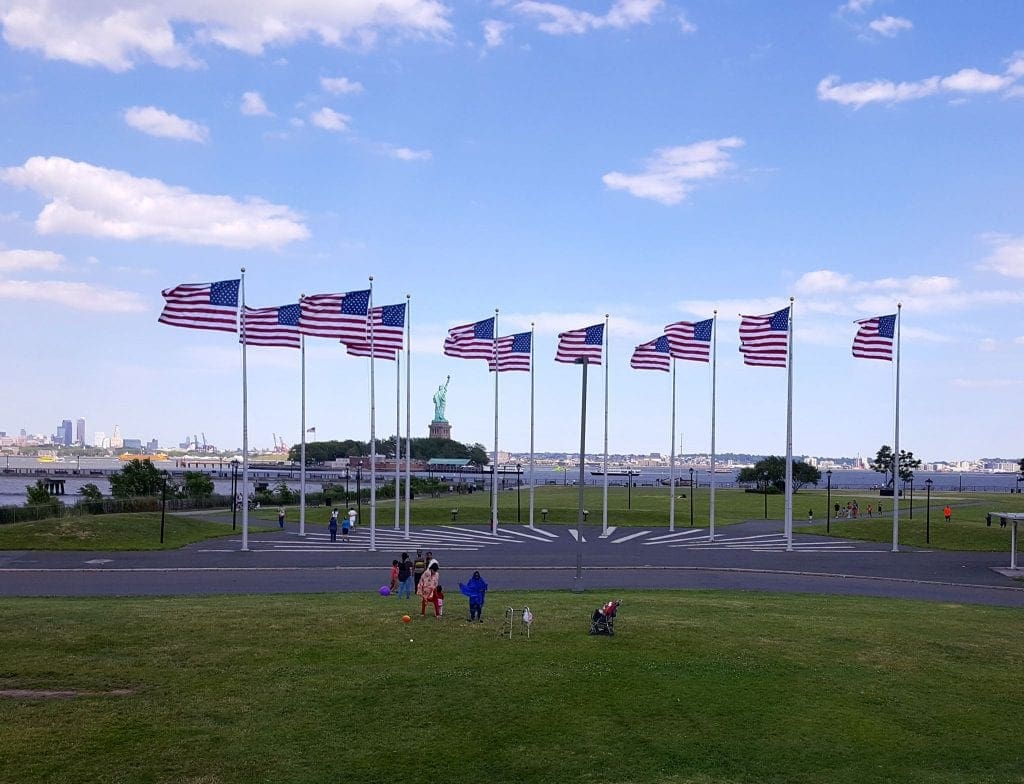
Park Flags | Photo courtesy of Liberty State Park Facebook
Liberty State Park Today
Features and Attractions
Liberty State Park contains roughly 1,212 acres of land. A good portion of that serves as the open waters of the New York-New Jersey Harbor Estuary. An additional 600 acres provide a combination of open space, wildlife habitat and recreation areas for the public.
With such a large amount of space, it makes sense that the park offers a wide variety of activities. Visitors can take ferry services from the park to the Statue of Liberty and Ellis Island, while also enjoying boating, fishing and crabbing. They can hold a picnic at the Richard J. Sullivan Natural Area. It contains the Communipaw Cove, a remnant of the Hackensack natives who once populated the land. Visitors can also attend the Liberty Science Center at the northwestern entrance. Among other accolades, the Center boasts the largest planetarium in the Western Hemisphere.
Park-goers can walk the Freedom Way, a road that goes through the center of the park and serves as the barrier between public and closed areas. On it, they can see two somber memorials. The first is a 1985 bronze memorial to the Holocaust that Nathan Rapoport designed. It depicts a U.S. soldier carrying a survivor of the Nazi death camps. Another memorial is that of “Empty Sky,” NJ’s official state memorial to the September 11 attacks.
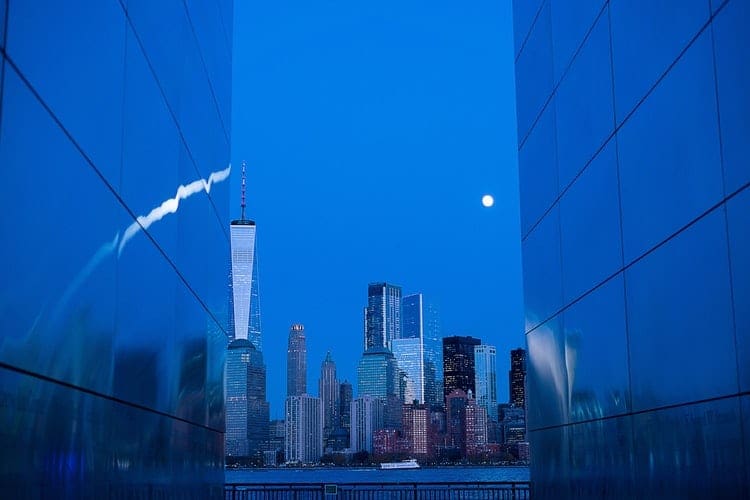
“Empty Sky” Memorial | Photo courtesy of Jonathan Roger
Renovations and Future Plans for Transforming the Land
The CRRNJ Terminal had been closed for years following the company’s bankruptcy. After Hurricane Sandy struck New Jersey in 2012, the abandoned site suffered costly damage. However, after undergoing a $20 million renovation project, the CRRNJ Terminal was rebuilt. It then opened its doors to the public as a tourist attraction. Visitors can now see for themselves how it looked when it was first constructed.
Originally, 240-250 acres in Liberty State Park remained closed to the public for more than four decades due to lingering contamination. Recently, however, the NJDEP greenlit funds to transform the section into an ecosystem sanctuary. Working alongside park advocates and environmentalists, the state plans to create new freshwater wetlands, salt marshes, forests and grasslands. They hope to replace the contaminated soil with fresh vegetation. Work is expected to begin in 2021.
The Park’s Enduring History and Legacy
Liberty State Park refuses to let its history stay in the books. Memorials and plaques to Pesin, Zapp, Conrad, and Grundy adorn many of the streets along the waterfront. Friends of Liberty State Park, an organization led by Sam Pesin, the son of Morris Pesin, continues to preserve, protect, conserve and promote the park. In addition, the park publishes its own newsletter: “The Green Oasis.” It alerts the public to new developments and projects.
The Park continues to capture the public’s attention. It has even appeared in several pop cultural icons. For instance, before it was constructed, its location was used as part of a scene in “The Godfather.” The famous cannoli scene features the Statue of Liberty in the background, watching over the area that would later become Freedom Way.
“Annie,” released in 2014, also used the park as part of its filming locations.
But perhaps what endures the most is Liberty State Park’s evolution. It appears almost theatrical in scope, like a play written in real-time. Its enthralling history, from its humble pre-colonial beginnings to its urbanized modern era, cements itself as not only a staple of New Jersey but a staple of human achievement and legacy.
Liberty State Park’s gate opens daily from 6 a.m. to 10 p.m. Admission is completely free.
Enjoyed our article on the history of Liberty State Park? Then check out this piece on the history of Hoboken.
Main photo courtesy of Joey Pedras
About the Author/s
Jared Berberabe is a senior at Ramapo College of New Jersey, majoring in English and Literary Studies and minoring in Spanish. When not writing, he enjoys practicing the piano.
